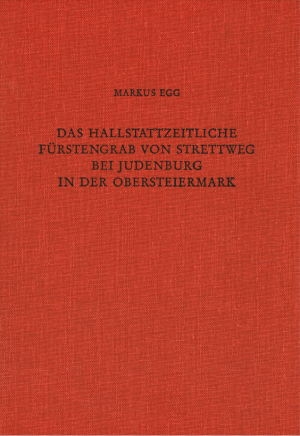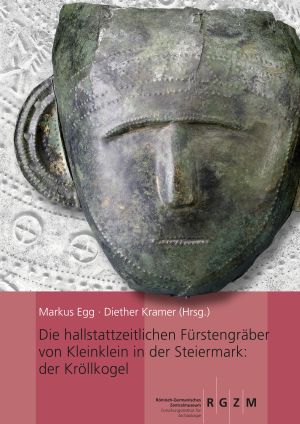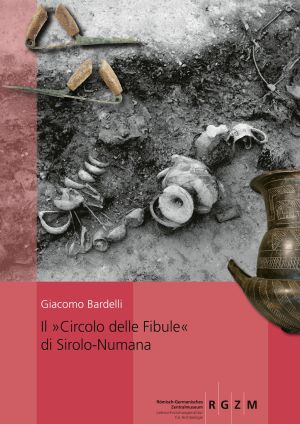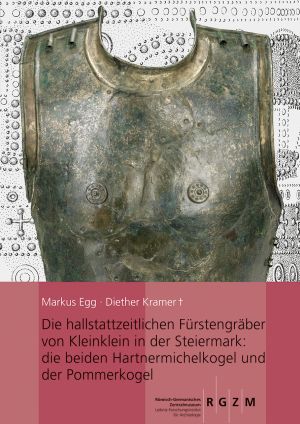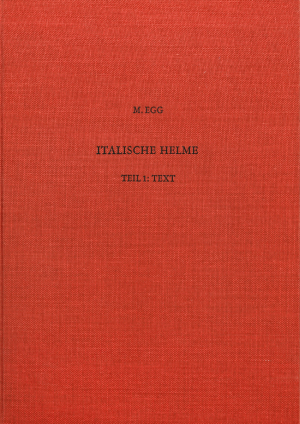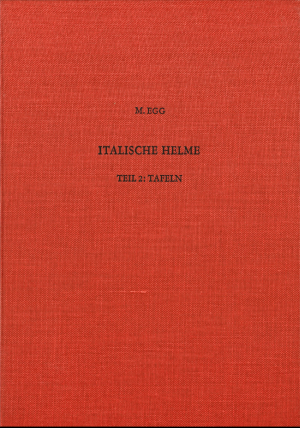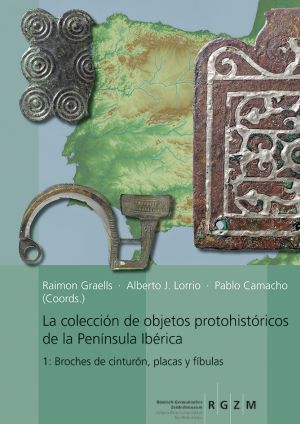Egg, Markus
Das hallstattzeitliche Fürstengrab von Strettweg bei Judenburg in der Obersteiermark
Strettweg in Upper Styria was the site of one of Austria's most important archaeological discoveries in 1851/52. The richly furnished ceremonial tomb from the Iron Age (around 600 BC) contained, among many other objects, the famous "cult chariot" - a unique masterpiece of Hallstatt-period craftsmanship.
The rich metal grave goods include weapons, horse harness and chariot parts, bronze and clay vessels - in other words, classic prestige goods of Hallstatt-period elites. Grave goods from the female costume suggest offerings to the dead. There is evidence of extensive cultural contacts with the Hallstatt cultures north of the Alps, with Upper Italy and with the ancient world.
Die hallstattzeitlichen Fürstengräber von Kleinklein in der Steiermark: der Kröllkogel
The sites around the Burgstallkogel between Großklein and Gleinstätten in western Styria are among the most outstanding of the Early Iron Age in Austria and Central Europe. The centre is the hilltop settlement on the Burgstallkogel, at the foot of which lies the Sulmtal necropolis, with some 700 burial mounds still standing.
On the first river terrace of the Saggau valley, near Kleinklein, the four richest princely burials of the entire eastern Hallstatt district were found. Most of the finds were made in the 19th and early 20th centuries. A successful re-excavation in 1995 in the most recent princely tomb, the so-called Kröllkogel, provided the impetus for the present new treatment and re-evaluation of this magnificent tomb. To achieve this goal, the Joanneum Universal Museum in Graz and the RGZM joined forces and organised an interdisciplinary group of researchers to examine all aspects of the find.
Il »Circolo delle Fibule« di Sirolo-Numana
Among the most important finds in the pre-Roman Marche, the »Circolo delle Fibule« of Sirolo-Numana (prov. Ancona) stands out for the huge number of fibulae found within its nine tombs – over 1,200 specimens of different types and materials. Discovered in 1970 and never before published, this key context of Picene archaeology is now the subject of a specific study that illustrates the variety of the grave assemblages and the complexity of the local funerary customs. An examination of the grave goods gives an insight into the processes of social structuring taking place in Numana between the end of the 7th century B.C. and the beginning of the 5th century B.C., between a strong conservatism and the first international contacts.
Die hallstattzeitlichen Fürstengräber von Kleinklein in der Steiermark: die beiden Hartnermichelkogel und der Pommerkogel
After the new presentation of the Kröllkogel, the other three princely tombs of the Separatnekropole of Kleinklein were also to be reworked.
The graves show a clear chronological sequence: At the beginning is Hartnermichelkogel 1, where the founder of the Separatnekropole was buried in the last decades of the 8th century BC. The clearly younger Pommerkogel is likely to date between 660/650 and 630/620 BC. What is remarkable is that the grave furnishings are largely identical, which testifies to a fixed set of rules according to which the highest elite had to be buried in small graves over a period of 150 years. The construction of the separate necropolis thus suggests a clearly elevated position of this group of people as well as a pronounced dynastic consciousness.
Italische Helme
Using the example of the Italian helmets, the area of influence of the Etruscans in Picenum, in Upper Italy and in the Alpine region as well as the interactions between the different cultural groups can be traced.
The Etruscans developed the helmet type with a circumferential brim in the 7th century BC; in the course of the 6th century a throat was added to secure the crest. The Negau helmet was typical of the Archaic period. It disappeared in Central Italy in the 4th century, but remained in use in the Alpine region until the 1st century BC. In the Tyrolean region and in eastern Switzerland, the helmets were not found as prestige goods in graves, as was usually the case, but in sacrificial sites, often badly damaged by fire. Similar to Greece, such helmets captured in war were a high-value consecration gift.
Vol. 2, see.
Italische Helme
Using the example of the Italian helmets, the area of influence of the Etruscans in Picenum, in Upper Italy and in the Alpine region as well as the interactions between the different cultural groups can be traced.
The Etruscans developed the helmet type with a circumferential brim in the 7th century BC; in the course of the 6th century a throat was added to secure the crest. The Negau helmet was typical of the Archaic period. It disappeared in Central Italy in the 4th century, but remained in use in the Alpine region until the 1st century BC. In the Tyrolean region and in eastern Switzerland, the helmets were not found as prestige goods in graves, as was usually the case, but in sacrificial sites, often badly damaged by fire. Similar to Greece, such helmets captured in war were a high-value consecration gift.he Italian helmets, the area of influence of the Etruscans in Picenum, in Upper Italy and in the Alpine region as well as the interactions between the different cultural groups can be traced.
Vol. 1, see.
Bazzano – ein Gräberfeld bei L’Aquila (Abruzzen): Die Bestattungen des 8.-5. Jahrhunderts v. Chr.
Bazzano near L'Aquila is one of the largest pre-Roman burial sites in Apennine Central Italy and even surpasses the necropolises of Fossa and Campovalano in the number of graves.
More than 500 burials of the Orientalising and Archaic period (8th-5th century BC) from the excavations of the Soprintendenza per i Beni Archeologici dell'Abruzzo from 1992-2004 are presented and analysed in this publication for the first time.
Above all, Etruscan pottery imports and their local adaptations enable a finer dating of the graves with their seemingly older traditional Italic decorative elements and weapons within an absolute chronology. In this way, the occupation sequence of the necropolis in four main phases, established on the basis of seriations and grave overlaps, can be better compared with the existing chronology systems.
In addition to questions on burial customs and social structures, the main part of the work is devoted to the classification and chronology of typical Middle Italian objects that are widespread far beyond Bazzano. With the complementary anthropological contributions, the picture of a mobile Iron Age population is sketched, which differed in its lifestyle from the individuals buried in the neighbouring necropolis of Fossa. Possibly this is due to a pronounced pastoral economy, transhumance or a very active warrior class, whose status is also emphasised by the high number of graves containing weapons.
La colección de objetos protohistóricos de la Península Ibérica: 1: Broches de cinturón, placas y fíbulas
The collection of materials from the Iberian Peninsula held at the RGZM consists of around 200 objects, divided into two groups with particular characteristics and problems: clothing ornaments and weapons.
This first volume presents objects related to clothing and/or personal adornment that correspond to the first acquisitions of Hispanic pieces made by the RGZM at the beginning of the 20th century.
The materials are necessarily divided by categories and types, as in a traditional catalogue, but the concern for methodological changes and the renewal of explanatory paradigms in the study of Hispanic protohistory has forced the authors to take certain precautions that make this catalogue an experiment. The aim has been to compensate for the lack of contexts with an intensive study and discussion of the parallels of each piece, turning each chapter into brief monographic studies. This approach makes it possible to characterise the area of origin and chronology of each specimen in the collection. It is a demanding work that attempts to go beyond the main function of the catalogue (that of compiling pieces from the antiquities market) and enters into the arduous work of scientific and patrimonial recovery, presenting the data for discussion.
This project to study the Iberian collection of the RGZM began in Mainz in 2012 on the initiative of the institution's management, as a contribution to the comprehensive study and dissemination of its archaeological collection. The success of the publication of this first part is the result of the coordination carried out by the authors (researchers from the RGZM and the University of Alicante) and the collaboration of specialists from different Spanish institutions.
Volume 2, see here.
Cascos hispano-calcídicos: Símbolo de las elites guerreras celtibéricas
The Hispano- Chalcidian helmet is a fully Hispanic type, datable to between the 4th and 2nd century BC and with a mainly Celtiberian concentration. However, this type has recently been identified following the looting and sale of a number of specimens, probably from Aranda de Moncayo. The name is explained by its shape, which is reminiscent of Chalcidian helmets and their Italic derivatives, but which takes important morpho-technological details from local Celtiberian production.
Although there is considerable variability among the 32 specimens identified so far, we can consider this to be the result of individualized production. But apart from these variations, the Hispano- Chalcidian group has an easily recognizable predetermined design: a shell with openings for the ears, long muzzle-guard, articulated cheeks (the rim of these pieces is reinforced by riveting a pseudo-hemispherical ribbon), the attachment of ribbons on the front and the systematic application of a complex decorative structure formed by feathers inserted in lateral appliqués and by the vertical lophos, supported between the fork of the cylindrical appendage which is documented to be fixed by three rivets on the upper part of the shell and the rings on the front and dorsal part of the shell.
The study presented here analyses the morphological and decorative characteristics in order to approach their production and the meaning of the weapons themselves: protective elements and, at the same time, vehicles with which to express different messages of power, military rank or influences acquired during the course of mercenary activity in southern Italy.



